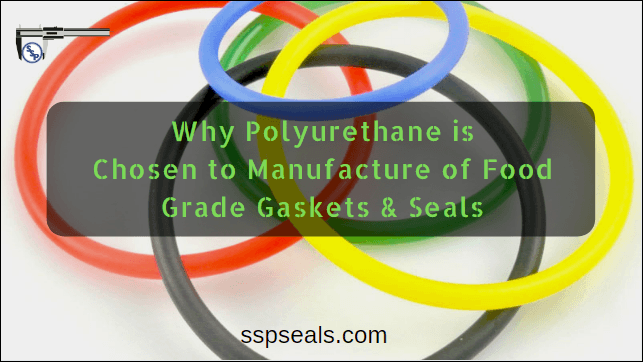 sales:
gm@sspseals.com
Toll Free: +1-888-238-SEAL Request A Quote
sales:
gm@sspseals.com
Toll Free: +1-888-238-SEAL Request A Quote
Unlike the past, food and beverage industry is focusing more on safety and sanitation in their production processes to prevent the rate of contamination. Being one of the decisive components in almost all food processing equipment and systems, the gaskets and seals have also undergone several modifications. Instead of using the gaskets and seals made from normal plastic materials, the food processing industry has started using equipment and systems with food grade gaskets and seals. This drastic move was based on the realization that most of the food contamination or sanitary issue is caused from sealing or gasket units made from poor quality materials. There are a plethora of choices when it comes to gasket material including virgin PTFE, polyurethane, EPDM, silicone and Viton. Amongst these, polyurethane is chosen to make FDA compliant gaskets & seals. What accounts for the popularity of this sealing material? This post gives you the answer.

Several properties and features of polyurethane have made it the most suitable material while making FDA compliant gaskets & seals. A few amongst the noteworthy features of the material are listed below:

The food processing industry is demanding in terms of sanitation requirements. This calls for the manufacturing of seals and gaskets using FDA approved materials such as the one discussed in this post. Other than Polyurethane, Virgin PTFE, EPDM, Silicone and Viton are also widely chosen in the making of FDA compliant gaskets & seals. If you are in the manufacturing of food grade equipment and systems, assure using the best of its kind FDA grade seals and gaskets. Get the finest quality food grade gaskets and seals from SSP Seals.
Mar 28, 2025
PTFE vs. Rubber Seals: Key Differences and BenefitsFeb 26, 2025
How Seals and Gaskets Safeguard Food and Beverage Products?Feb 05, 2025
Comprehensive Guide to FKM Fluorocarbon Rubber: Properties, Applications, and BenefitsDec 18, 2024
Pneumatic Seals and Hydraulic Seals: Types and Materials DiscussedNov 25, 2024